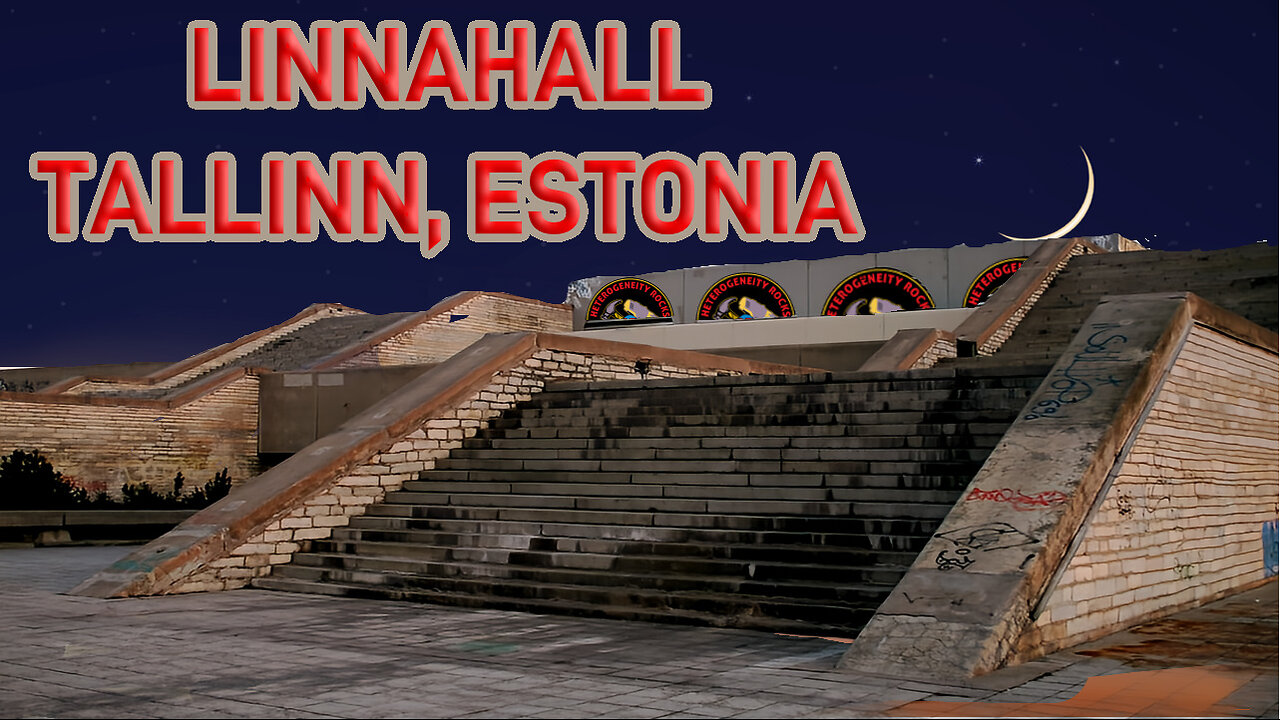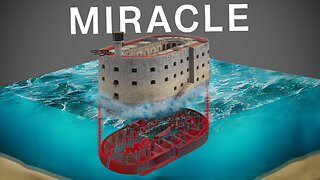Premium Only Content

Places to see in Tallinn Estonia like Linnahall #linnahall #tallinn
Places to see in Tallinn Estonia like Linnahall. Linnahall, a monumental concrete structure. Originally constructed for the 1980 Moscow Olympics, this architectural marvel offers more than just a glimpse into Estonia's Soviet past; it provides panoramic views of the Baltic Sea and the Tallinn skyline, making it a perfect spot for photographers and sightseers alike. As you walk through its expansive, weathered corridors, you'll find a fascinating juxtaposition of brutalist architecture and evolving urban culture, with various art installations and cultural events breathing new life into the space. Whether you're an architecture enthusiast, a history buff, or simply in search of a unique vantage point, Linnahall's eerie charm and historical significance make it an essential stop on your Tallinn itinerary.. On a crisp autumn afternoon, I found myself standing before Linnahall in Tallinn, Estonia. The air was filled with the briny scent of the Baltic Sea and the earthy aroma of fallen leaves. This massive structure, a relic of Soviet-era architecture, stood like a sleeping giant on the edge of the harbor, its weathered concrete exterior softened by time. Approaching it, I felt a mix of awe and melancholy.
Linnahall, originally named the V. I. Lenin Palace of Culture and Sports, was built for the 1980 Moscow Olympics to showcase Soviet grandeur. Decades later, it stood as a testament to a bygone era, its grandiosity faded but still commanding.
Walking up the wide, shallow steps leading to the main entrance, I was struck by the sheer scale of the building. The sprawling, flat-topped structure seemed endless, its concrete walls marked by the passage of time. Graffiti added splashes of color, a modern layer on this historic canvas. The distant cries of seagulls echoed off the empty, cavernous spaces within.
As I wandered through the deserted halls, I imagined what it must have been like during its heyday. The main arena, now a ghostly echo chamber, would have been filled with the roar of spectators, the rhythmic pounding of athletic feet, and the jubilant cries of victory. Today, it was eerily silent, the only sound my footsteps reverberating against the walls.
In one of the smaller rooms, where light filtered through broken windows, I found remnants of old posters and banners, their colors faded and edges curled. They whispered stories of concerts, sporting events, and political gatherings. This place had been a hub of activity, a cultural and social epicenter. Now, it felt like a forgotten memory, waiting to be rediscovered.
I climbed to the rooftop, where the view took my breath away. The panorama of Tallinn spread out before me, a stunning juxtaposition of old and new. To the east, the medieval spires of the Old Town pierced the sky, their silhouettes sharp against the setting sun. To the west, the modern skyline of glass and steel reflected the golden light. Below, the sea stretched out, its surface shimmering.
Sitting on the edge of the roof, I let my thoughts drift. Linnahall, in its current state, was a poignant symbol of change. It had witnessed the rise and fall of empires, the shifting tides of history. The Soviet Union, which had once seemed unbreakable, was now a chapter in the past. Yet, this building remained, a silent observer of the passage of time.
I felt a deep connection to Linnahall, as if its story and my own were intertwined. We both carried marks of our journeys, scars and memories that shaped who we were. This place, with its stark beauty and haunting emptiness, mirrored the complexities of human experience – the glory and the decay, the dreams and the disillusionments.
As the sun dipped below the horizon, casting the sky in hues of orange and pink, I made my way back down. The shadows lengthened, and the air grew cooler. I paused at the entrance, taking one last look at this architectural marvel. Linnahall might be neglected, but it was far from forgotten. It held within its walls a reservoir of stories, each one a piece of history.
Walking away, I felt a sense of gratitude for the experience. Visiting Linnahall was more than just a journey to a physical place; it was a voyage through time, a chance to reflect on the past and contemplate the future. It reminded me of the impermanence of all things, yet also the enduring nature of human spirit and creativity.
Tallinn continued to grow and evolve, but Linnahall would always stand as a monument to its rich, multifaceted history. It was a place where the past and present coexisted, each lending depth to the other. And for that brief moment, I was part of its story, a visitor who witnessed its silent grandeur and carried its memory forward.
#estonia #travelvlog #europe
The videos on my channel are purely for entertainment. I am not liable for any content displayed or discussed here. For advice or information, please seek a professional.
-
 LIVE
LIVE
GritsGG
4 hours agoWin Streaking! Most Wins 3100+! 🔥
314 watching -
 10:24
10:24
Zoufry
6 hours agoThe Building That Shouldn't Exist : Fort Boyard
31.3K10 -
 4:25:19
4:25:19
Grant Cardone
5 hours agoHow to Build Wealth in 2025 - Grant Cardone LIVE!
35.3K3 -
 3:03:03
3:03:03
I_Came_With_Fire_Podcast
12 hours agoEschatologist: This is EVIDENCE the Biblical END TIMES Are Coming Close
27.2K3 -
 2:55:04
2:55:04
Beyond_Bitz
3 days agoDeath Stranding - Part 3 - Mule Mercenaries & Electric Bicycles
16.4K -
 LIVE
LIVE
BBQPenguinn
3 hours ago $0.58 earnedNEW WIPE! Tasking & PVP
67 watching -
 18:11
18:11
Actual Justice Warrior
5 hours agoMamdani Is In BIG TROUBLE
35.4K53 -
 LIVE
LIVE
J0hnThunder
4 hours ago $0.43 earned🚨 Robocop: Unfinished Business ( DLC ) 🚨 || Serve the Public Trust || Part 2
51 watching -
 1:08:18
1:08:18
VapinGamers
5 hours ago $0.71 earnedTools of the Trade - Almost Box Fresh EP-01a - !rumbot !music
17.8K2 -
 LIVE
LIVE
Astral Doge Plays!
7 hours agoDonkey Kong Bananza ~LIVE!~ Let's Go Bananas in This Bananza!
40 watching